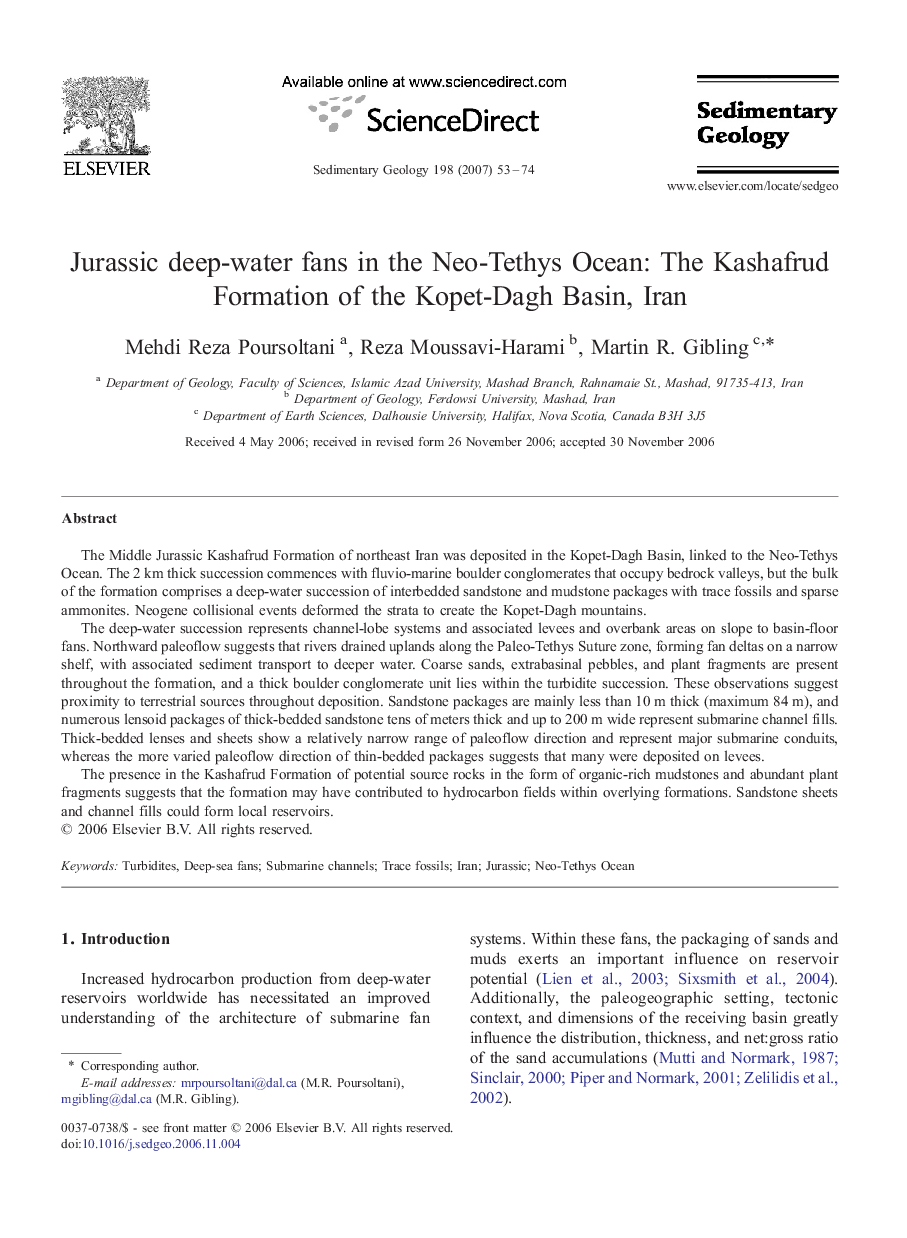| Article ID | Journal | Published Year | Pages | File Type |
|---|---|---|---|---|
| 4690838 | Sedimentary Geology | 2007 | 22 Pages |
The Middle Jurassic Kashafrud Formation of northeast Iran was deposited in the Kopet-Dagh Basin, linked to the Neo-Tethys Ocean. The 2 km thick succession commences with fluvio-marine boulder conglomerates that occupy bedrock valleys, but the bulk of the formation comprises a deep-water succession of interbedded sandstone and mudstone packages with trace fossils and sparse ammonites. Neogene collisional events deformed the strata to create the Kopet-Dagh mountains.The deep-water succession represents channel-lobe systems and associated levees and overbank areas on slope to basin-floor fans. Northward paleoflow suggests that rivers drained uplands along the Paleo-Tethys Suture zone, forming fan deltas on a narrow shelf, with associated sediment transport to deeper water. Coarse sands, extrabasinal pebbles, and plant fragments are present throughout the formation, and a thick boulder conglomerate unit lies within the turbidite succession. These observations suggest proximity to terrestrial sources throughout deposition. Sandstone packages are mainly less than 10 m thick (maximum 84 m), and numerous lensoid packages of thick-bedded sandstone tens of meters thick and up to 200 m wide represent submarine channel fills. Thick-bedded lenses and sheets show a relatively narrow range of paleoflow direction and represent major submarine conduits, whereas the more varied paleoflow direction of thin-bedded packages suggests that many were deposited on levees.The presence in the Kashafrud Formation of potential source rocks in the form of organic-rich mudstones and abundant plant fragments suggests that the formation may have contributed to hydrocarbon fields within overlying formations. Sandstone sheets and channel fills could form local reservoirs.
